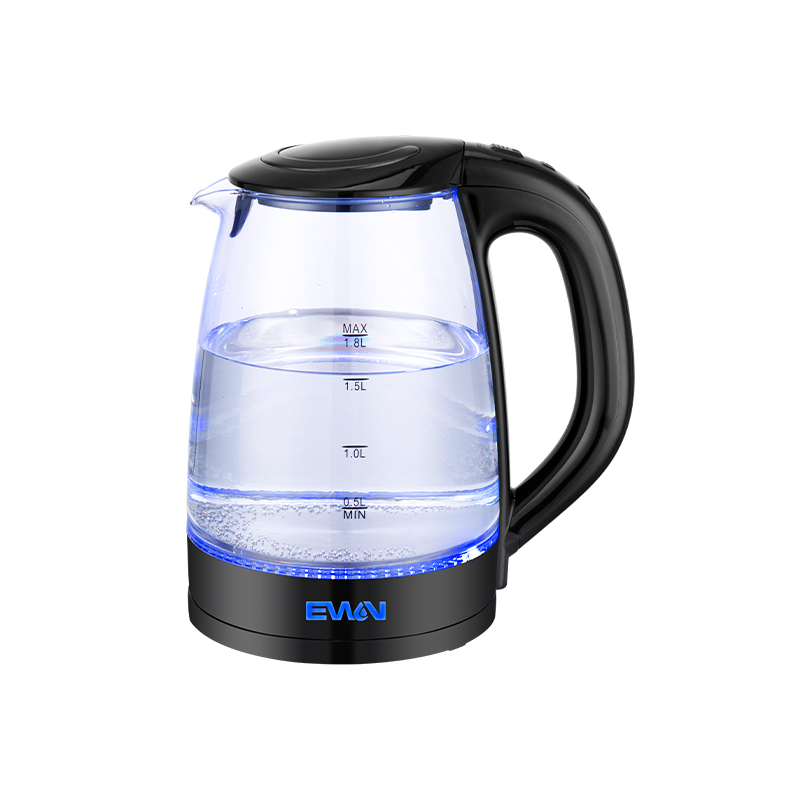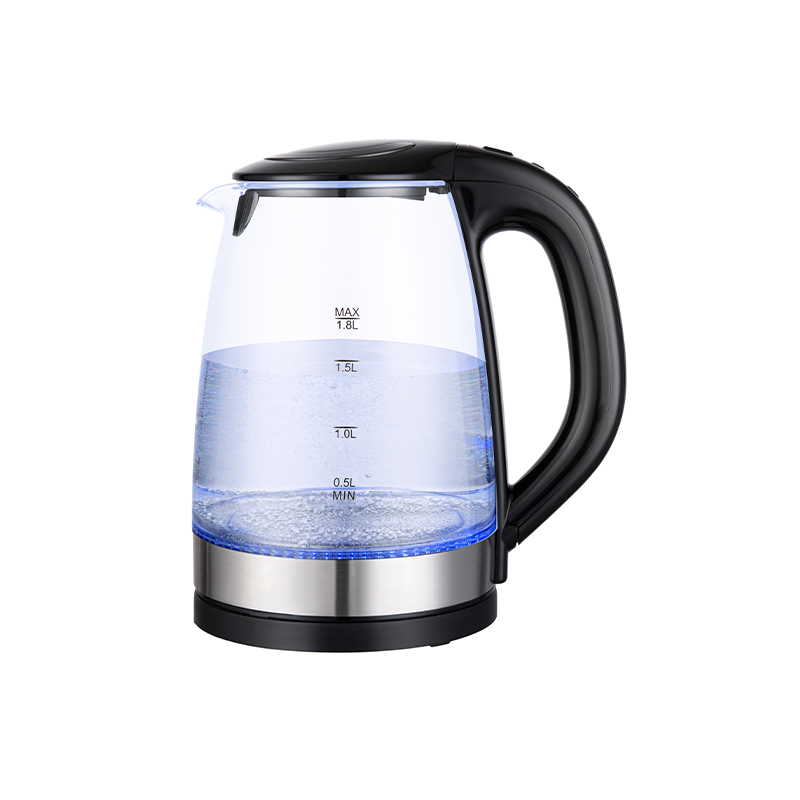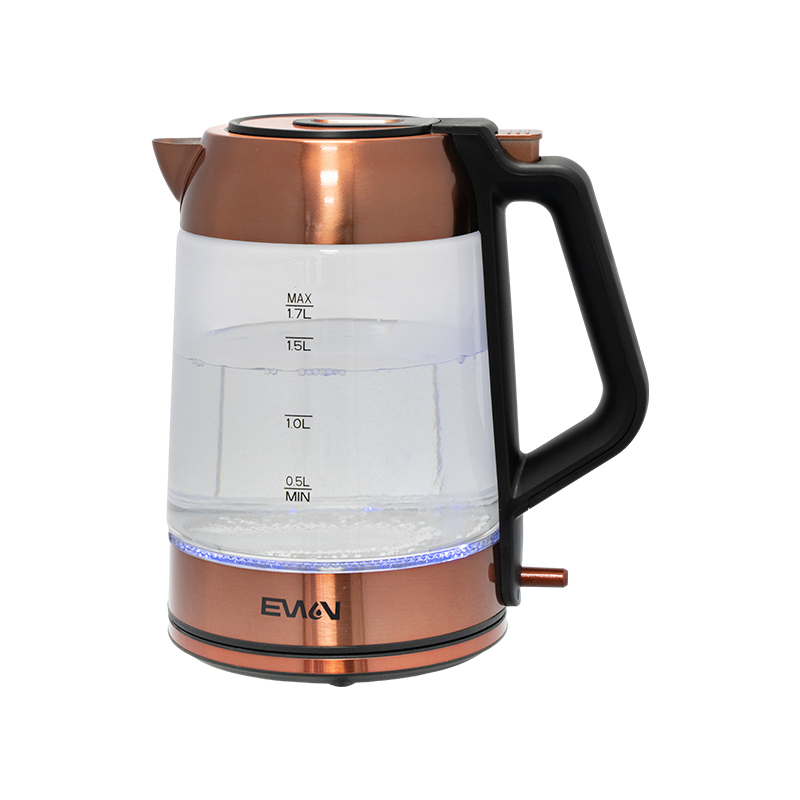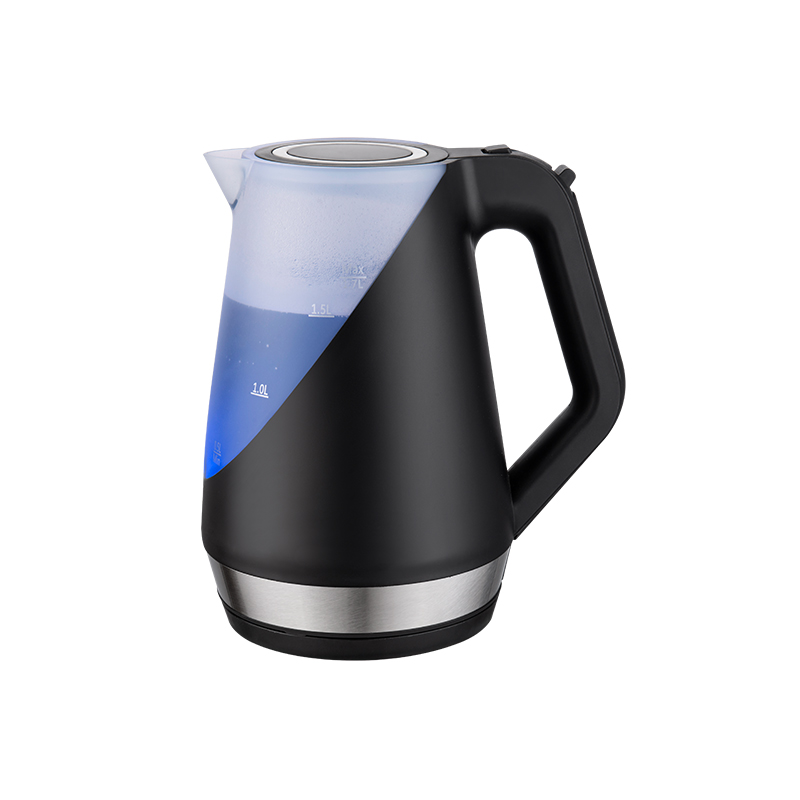+86-18667862027
Web Menu
Product Search
Exit Menu
Is the glass kettle prone to breakage due to high temperature or accidental impact?
Material Properties of Glass Kettles
Glass kettles are typically made from borosilicate glass or tempered glass, which are designed to withstand thermal stress. Borosilicate glass has a low coefficient of thermal expansion, allowing it to resist cracking when exposed to rapid temperature changes. Tempered glass is processed to increase surface strength, making it less likely to shatter from minor impacts. Despite these enhancements, the glass still has limitations and can be vulnerable if subjected to extreme temperature differences or strong mechanical shocks. Understanding the material properties is crucial for assessing how prone a glass kettle is to breakage during everyday use.
Impact of High Temperature on Glass Kettles
High temperatures can affect glass kettles in several ways. Boiling water generates significant heat, and repeated heating and cooling cycles can create stress points within the glass structure. While borosilicate glass is designed for high-temperature applications, sudden exposure to extreme temperature changes, such as pouring cold water into a hot kettle, can cause thermal shock. Thermal shock occurs when different parts of the glass expand or contract at different rates, potentially leading to cracks or breakage. To mitigate this risk, manufacturers recommend gradually heating the kettle and avoiding abrupt temperature changes. Controlled heating helps preserve the integrity of the glass over time.
Resistance to Accidental Impact
Accidental impact is another common cause of glass kettle breakage. Dropping the kettle, bumping it against a hard surface, or applying excessive force to the handle or spout can compromise the glass. Tempered glass kettles are more resistant to impact than regular glass, but they are not indestructible. The design of the kettle, including reinforced rims and ergonomically designed handles, can help distribute impact forces and reduce the likelihood of breakage. Users are advised to handle glass kettles with care, especially when they are full of hot water, to minimize the risk of accidental damage.
Design Features Enhancing Durability
Modern glass kettles often incorporate design elements to improve durability. Thickened walls, reinforced spouts, and sturdy lids reduce the risk of cracking under normal use. Some kettles include silicone or plastic bases that absorb minor shocks and prevent direct contact between the glass and hard surfaces. Additionally, ergonomic handles and balanced weight distribution help prevent accidental drops by providing a secure grip. These design features, combined with the inherent strength of borosilicate or tempered glass, make glass kettles more resilient to both thermal and mechanical stress, although care is still necessary during everyday use.
Safety Measures for Glass Kettles
Manufacturers often provide safety guidelines to minimize the risk of breakage. Users are advised not to fill the kettle above the maximum water level, as overfilling can increase internal pressure and strain the glass. It is also recommended to place the kettle on stable, heat-resistant surfaces and avoid using metal utensils inside the glass body, which could cause scratches or chips. Many glass kettles are equipped with automatic shut-off features that turn off the heating element once water reaches boiling point, preventing overheating and reducing thermal stress. Adhering to these precautions can significantly decrease the likelihood of accidents or damage.
Comparison of Glass Kettles with Other Materials
When compared to stainless steel or plastic kettles, glass kettles offer the advantage of visual monitoring of water levels and clarity during boiling. However, glass is generally more fragile than metal or high-grade plastic. Stainless steel kettles are highly resistant to impact and can tolerate rough handling, but they do not allow users to see the water during boiling. Plastic kettles may be lightweight and impact-resistant, but they can degrade over time due to heat exposure and may release odors. Glass kettles provide a balance of aesthetic appeal and heat resistance, though they require careful handling to prevent breakage from thermal or mechanical stress.
Maintenance and Handling Recommendations
Proper maintenance and careful handling are essential to prolong the lifespan of a glass kettle. Regular cleaning prevents mineral buildup, which can weaken the glass over time. It is recommended to use soft cloths or non-abrasive sponges to clean the interior and exterior surfaces. Avoid sudden impacts by placing the kettle on soft or padded surfaces when not in use. Additionally, handling the kettle with two hands when full provides extra stability and reduces the risk of accidental drops. Following these practices helps maintain the structural integrity of the glass and ensures safe, long-term use.
Breakage Prevention Tips
To further reduce the likelihood of breakage, users should avoid pouring extremely cold water into a hot kettle and refrain from using the kettle on uneven surfaces. Using kettle warmers or bases that match the diameter of the glass bottom ensures even heat distribution. Inspecting the kettle regularly for small cracks or chips allows early detection of potential issues before they develop into larger problems. If minor damage is observed, it is advisable to discontinue use, as continued heating may lead to sudden failure. Taking preventive measures helps users safely enjoy the benefits of a glass kettle.
Glass Kettle Durability Factors
The table below summarizes the main factors affecting the durability and breakage risk of glass kettles.
| Factor | Impact on Durability | Recommended Mitigation |
|---|---|---|
| Material Type | Borosilicate or tempered glass reduces thermal shock risk | Choose high-quality glass; avoid extreme temperature changes |
| Wall Thickness | Thicker walls provide additional strength | Handle carefully; avoid overfilling |
| Temperature Changes | Sudden heating or cooling can cause cracks | Preheat gradually; avoid pouring cold water into hot kettle |
| Impact or Drop | Accidental knocks can lead to breakage | Place on stable surfaces; handle with care |
| Usage Frequency | Frequent heating and cooling cycles may induce stress over time | Allow kettle to cool naturally; inspect regularly for damage |
| Cleaning Methods | Abrasive cleaning can scratch or weaken the glass | Use soft cloths or non-abrasive sponges |
Conclusion on Glass Kettle Durability
Glass kettles offer visual clarity and high-temperature resistance, making them a popular choice for domestic and commercial use. While borosilicate and tempered glass improve resilience against thermal and mechanical stress, they remain susceptible to damage from sudden impacts or improper handling. By following recommended maintenance practices, handling the kettle carefully, and avoiding extreme temperature changes, users can reduce the risk of breakage and ensure long-term usability. Understanding the factors that affect glass durability helps in making informed choices and maintaining safe usage habits for glass kettles.
address
No.935 Qiye Road, Zhouxiang Town, Cixi City, Zhejiang Province, China
Sale’s Email
leila@nbewin.com
sales8@nbewin.com
sales9@nbewin.com
Copyrighte Ningbo Ewin Electrical Appliances Co., Ltd. All Rights Reserved.












